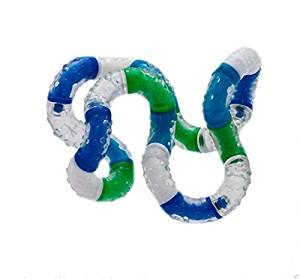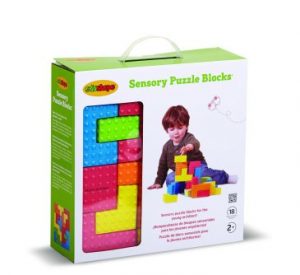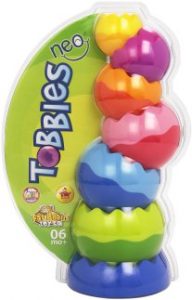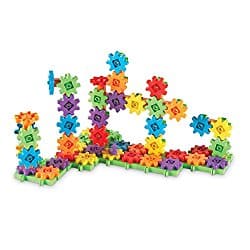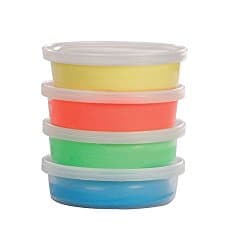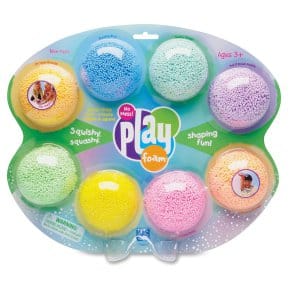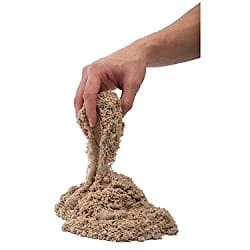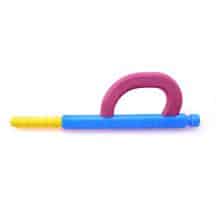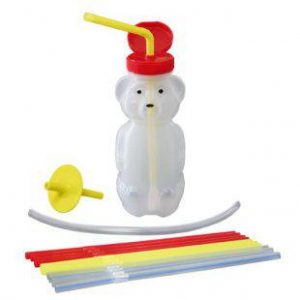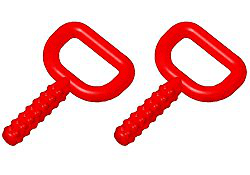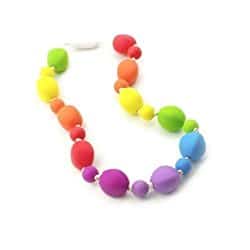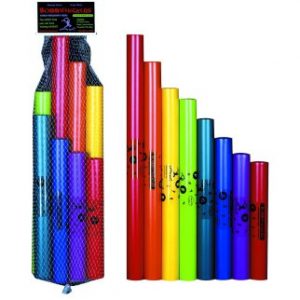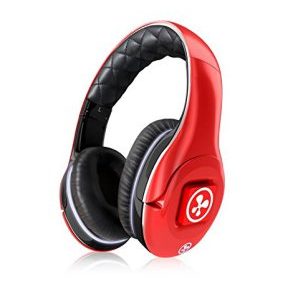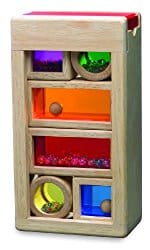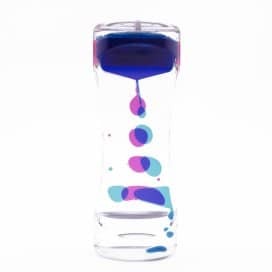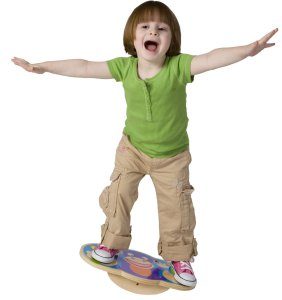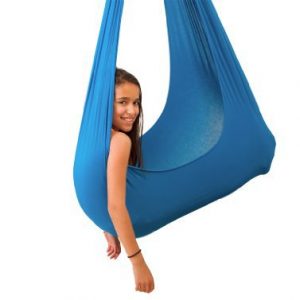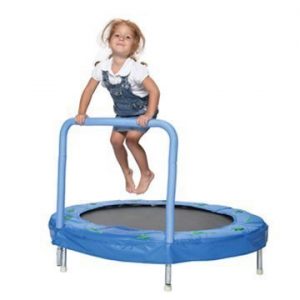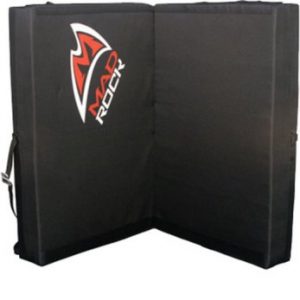Best Sensory Toys for Autism (Tactile, Oral, Auditory, Visual, Vestibular, Proprioceptive)
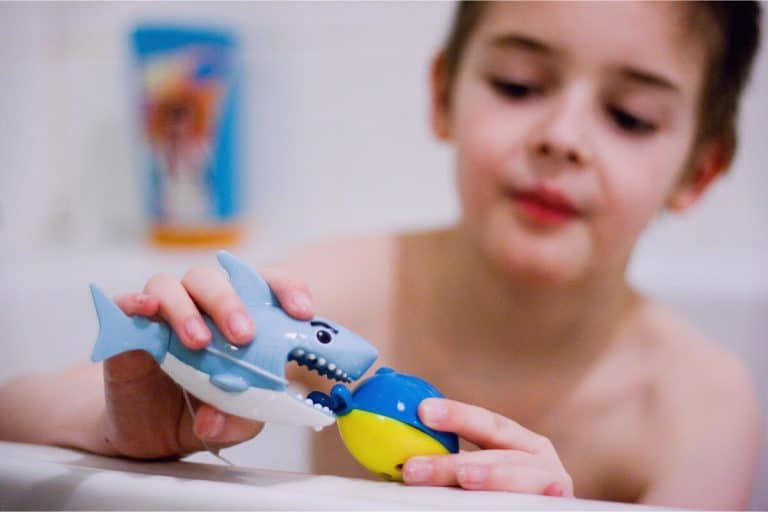
There are different levels of autism, and each child requires a different amount of sensory input, as well as a different amount of sensory input. Finding the right sensory toy for your child is very important because the sensory activity can either create a more stable environment, or a more hectic environment for your child. Here, we will cover different types of sensory input types, and some of the toys that will help your child along the way.
Many of the toys we have listed here are great for sensory input, and they serve as therapeutic toys as well. To check prices, click the name or the image and you'll be sent to the Amazon product page. Now, let's get you on the way to creating the right sensory diet for your child.
What is a Sensory Diet: The Right Therapy Tools and Toys
A sensory diet is a sensory plan and set up that provides your child with a daily schedule of the sensory activities they crave. It will help to ensure that your child is properly engaged, receives the right amount of sensory input, and help balance their nervous system. Developing the best sensory diet for your child may take a little time, but once you have learned their needs, you can quickly increase their focus, and ability to handle different situations throughout their day. Sensory toys are an excellent way to meet the needs of children who need sensory input, and there are more input types than only physical, auditory, and visual sensory types.
Tactile Sensory Toys
Tactile sensory seeking is common in children who have autism and sensory processing disorder. Basically, your child is seeking the ability to touch different items, or seeking being touched. Your child may seem like they are always in search of something that feels different from what they are used to. Children who are seeking tactile stimulation may begin touching people, trying to get you to touch them, and some may even become violent in their search of tactile stimulation. Here are some toys that will help curb this need, and help provide your cild with different forms of tactile stimulation.
Popping Peepers Frog Fidget Toy
Poppin' Peeper Frog toy is made by Warm Fuzzy Toys. It is light weight, at only 1.28 ounces. Not only does it provide tactile stimulation, it also offers a great solution to fidgeting and strengthen your child's grip. Your child will be able to use the toy to self-regulate, and keep their hands busy.
It is a great stress reliever for children who become stressed out during lessons that require them to sit still. Because of its size, it is recommended for older children. It does not fit comfortably into a small hand, so children who are age 8 and under may not be able to utilize the toy.
Tangle Based Fidget Toys
Tangle based fidget toys are a favorite for children with ADHD with autism. Even though the toy is made of multiple pieces, a soft, rubber material covers each one. This coat prevents your child from pinching their skin between the pieces.
Each toy consists of 20 pieces that twist individually. The toy twists into different shapes which can reduce stress dramatically.
Sensory Puzzles
Sensory puzzle blocks are an excellent way to provide educational and sensory stimulation. They are perfect for tactile sensory input and visual sensory development.
Doing puzzles can help your child increase their hand-eye coordination and fine motor skills. Puzzles are always a treat for a child and provides valuable one-on-one education or bonding time.
Tobbles
Tobbles are a great toy for anyone who needs tactile sensory input, or just a little quiet time. For children with autism, these tactile sensory items are treat for improving fine motor skills, improving coordination, and to help them become more spatially aware.
They are also valuable for helping your autistic child build spatial acuity and a better relationship with the items around them.
Building Gears
If you are introducing the concept of mechanics, or your child just loves to feel smooth surfaces and rounded corners, these building gears are ideal. When they click together, your child will also receive stimulation.
The colors add more perception, depth, and stimuli as well.
Therapy Puddy
Puddy is a great alternative to items like play-dough. Since it is made of silicone, and it is non-toxic, it provides more resistance than play-dough when it is manipulated.
It is the perfect, inexpensive tool for proprioceptive stimulation, as well as tactile stimulation.
Therapy Foam
This play foam is squishy and ideal for sculpting. It also provides an unusual (but enjoyable) noise when kids squeeze it. This toy encourages your child to be self-expressive while it provides tactile stimulation and improves fine motor skills.
Kinetic Sand
Kinetic sand is a new concept for everyone. It is perfect for children seeking tactile stimulation who love to create. Like previously recommended products, it is non-toxic, which makes it a safe manipulative for children who also have an oral fixation with different textures.
Oral Motor Seeking
Some kids with autism crave oral-motor input. This means that they want different textures and things to chew on (sometimes to suck on). These cravings easily become habits, so make sure that your child is not overusing the toys. Some kids can receive this stimulation by chewing crunchy foods. Others require therapeutic aids.
Oral motor seeking has other benefits as well. It can improve speech and help improve the ability to feed one's self.
Vibrating Chew Tool
This is an amazing therapeutic tool for providing your child with oral sensory input while reducing their urge to fidget. The disruption this tool causes regulate and normalize oral defensiveness.
It can help to desensitize your child to oral stimuli, and it can help decrease the urge to put different things in their mouth.
Bear Cup Kit
This oral sensory kit is perfect for helping your child feed themselves if they suffer from a delay. It can also help to regulate the rate that fluid goes into the mouth if your child has difficulty controlling the speed. It helps ensure that liquids are taken into the mouth in manageable amounts so they do not choke.
Once your child has regulated the amount of liquid they take in, you can easily remove the valve for regular drinking.
Super Chews
These chews are perfect for children seeking oral sensory input. They have easy to grasp handles for kids of any age. The product latex-free, non-toxic, and unflavored. Designed for long periods of biting and gnawing, you won't be disappointed with the durability or quality.
However, please remember that extended periods of chewing can reduce the length of your child's tooth roots, which make them unstable inside the gum. Try to limit chewing to 30 minutes per day.
Silicone Sensory Chew Necklace
This is perfect example of a new trend in sensory chew toys: Chewelry. Chewing on non-food items frequently draws unwanted eyeballs (and judgement). Chewelry is designed to be discrete, while still satisfying urges.
Just like the super chews mentioned above, these sensory chew necklaces are perfect for kids that craves oral-motor input. The necklace is relatively discrete, making the act of chewing less distracting to other kids, and boosting your child's confidence.
The length of the necklace is adjustable, and the clasp breaks away to prevent entanglement.
Auditory Seeking
Children who have autism or sensory processing disorder sometimes crave auditory sensory input. You can tell when they are seeking auditory stimuli because they will speak louder than they typically do, make loud noises, or even make high-pitch screeching noises. Music based stimuli provide calmness and balance, without causing a noticeable disruption.
Diatonic Scale
The Diatonic scale set is perfect for auditory sensory input. Comprised of eight tuned percussion tubes, when hit on a hard surface they emit a magical musical tune.
If your child loves to beat on things, and they love auditory stimulation, these are absolutely perfect. The color differences make them a great visual stimulation activity too.
NABI Headphones
There are a number of things that can improve your autistic child's behavior between subjects. One of these being music. Between subjects in homeschooling, music allows your child to wiggle and squirm while they refocus their mind.
For children who are having trouble focusing, the headphones really do help. They can put on their favorite music and get their frustration out.
Rainbow Sound Blocks
If your child loves sensory activities, and frequently craves both auditory and tactile stimulation simultaneously, this activity set will help your child center himself/herself. The toy teaches children to bring themselves back to a state of calm.
(Well, that is if the noise doesn't drive mom or dad up the wall first.)
Visual Seeking
Children who are looking for visual stimuli may stare at bright objects, or move things in front of their face rapidly. Most children who crave visual sensory input require bright light in order to concentrate while they do their work. Visually stimulating toys are a great way for your child to refocus, and an excellent way of providing the visual stimuli they are craving.
Bubble Drop Motion
Bubble drops are great for all children (those who have autism and those who do not). Use this toy to help your child calm down and refocus his/her mind on something soothing.
I actually have one of these sitting on my desk. When I am thinking about an article, or I am trying to develop a concept, I stare at this.
We all know the feeling. The feeling of drawing a blank and being unable to truly develop a concept until we take our mind off of it. This toy provides just that! A way of taking your mind off of everything and just focusing on something that is visually attractive.
Hoberman Sphere
Okay, you caught me. When my kids aren't playing with this sphere, either my husband or I am.
By looking at the product photo, you can probably figure out exactly what it does. But if not, when you pull on opposite sides, the sphere expands to a 30-inch interlaced ball.
Because these spheres are brightly colored, and they change in appearance as you expand them, they are the prefect toy for visual sensory input. They are also great for mindless fiddling.
Vestibular Sensory Seeking
Vestibular sensory seeking is one of the most common problems associated with autism. Children who are seeking vestibular sensory input crave movements of their head, or the position their body is in. This is why they spin, roll, rock, and swing wildly.
Many children who crave vestibular sensory input become risk takers and can cause serious harm to themselves. The act of moving freely through the air becomes very tempting when children crave this type of sensory input.
An example of this is that my son used to pile pillows up behind the couch and jump off onto them. This can be very dangerous, so redirecting this urge into something healthy is very beneficial.
Active Play Monkey Balance Board
This balance board encourages your child to meet their need for physical movement while improving balance and coordination. The board is designed for children up to 200 pounds, so it can be beneficial for a long time after you purchase it.
How does it work? Your child stands on the board and uses their core muscles to move it around. They can view the world at different speeds while they build muscle and develop coordination.
This concept is so effective that body builders have hijacked the design and used them in core exercise routines.
Therapeutic Swing
The therapeutic swing is a great way for children to receive vestibular stimulation in a controlled setting. It is ideal for kids who are still working on building enough balance and coordination to use other methods.
Even though it can provide vestibular stimulation, many children appreciate the soothing sense of movement. The swing can also be set up to provide the squeezing sensation your child craves during tactilc stimulation.
Proprioceptive Seeking
Children who are seeking proprioceptive stimuli have a lot of energy. A lot of energy. They crave the sensations of crashing into things, jumping up and down, and pressing their toys. Because they frequently use too much force with their toys, it's no surprise that they typically break them.
Activities that involve substantial work usually provide a calming sensation. It can also help someone who is autistic organize the activity they have going on in their brain and nervous system.
Bouncer Trampoline with Handle Bar
The bouncer trampoline is a must have for kids who are rough by nature. They are perfect for balancing out proprioceptive input and significantly reduce the noise when kids feel the need to jump and stomp.
Children who feel the need to exercise/move when they're required to stay indoors will also benefit.
Mad Rock Crash Pad
The Mad Rock Crash Pad is a great way for children to crash and bash safely. It will undoubtedly extend the life of your couch, considering that many children turn to couch cushions as an alternative.
Even though many people think their child with autism only crave visual, physical, and auditory stimulation, they actually crave much more.
Vestibular and proprioceptive stimuli typically go unsatisfied because children are told to "quit screeching" or to "stop flapping." This movement may be necessary for your child to feel fulfilled in their everyday life, so make sure to add them into your child's sensory diet!
From Our Home to Yours
See more Lifestyle


